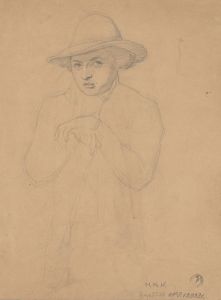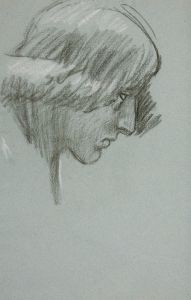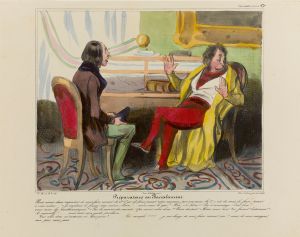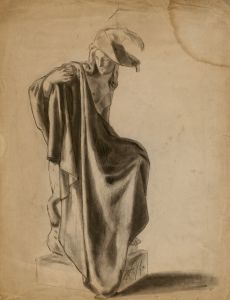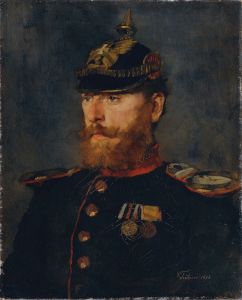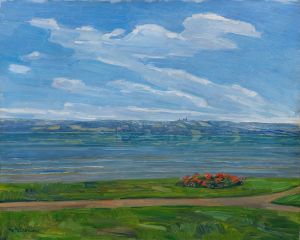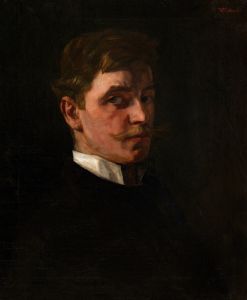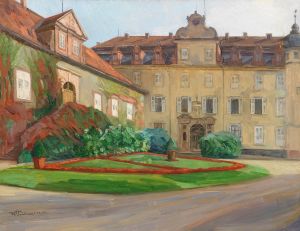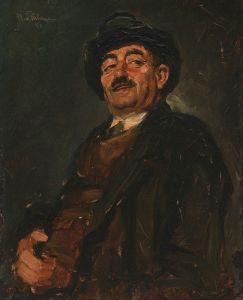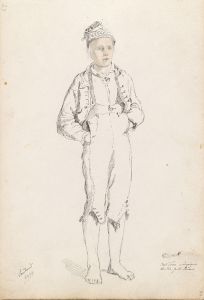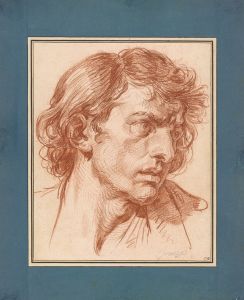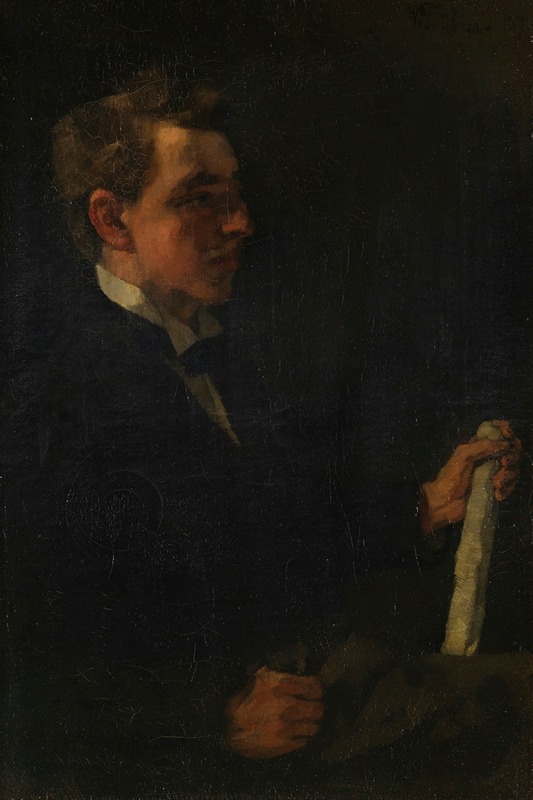
Studiosus Michaelis, mit Papierrolle
A hand-painted replica of Wilhelm Trübner’s masterpiece Studiosus Michaelis, mit Papierrolle, meticulously crafted by professional artists to capture the true essence of the original. Each piece is created with museum-quality canvas and rare mineral pigments, carefully painted by experienced artists with delicate brushstrokes and rich, layered colors to perfectly recreate the texture of the original artwork. Unlike machine-printed reproductions, this hand-painted version brings the painting to life, infused with the artist’s emotions and skill in every stroke. Whether for personal collection or home decoration, it instantly elevates the artistic atmosphere of any space.
Wilhelm Trübner was a prominent German painter associated with the realist movement in the late 19th and early 20th centuries. Born on February 3, 1851, in Heidelberg, Germany, Trübner was known for his detailed and realistic portrayals of everyday life, landscapes, and portraits. He was part of the circle of artists who were influenced by the Munich School, which emphasized a naturalistic approach to painting.
One of Trübner's notable works is "Studiosus Michaelis, mit Papierrolle," which translates to "Student Michaelis, with Paper Roll." This painting exemplifies Trübner's skill in capturing the essence of his subjects with precision and a keen eye for detail. The work is a portrait, likely depicting a student named Michaelis, holding a roll of paper, which may suggest his scholarly pursuits or academic achievements. The painting reflects Trübner's interest in portraying individuals in a realistic manner, focusing on their expressions and the subtleties of their demeanor.
Trübner's technique is characterized by his use of light and shadow to create depth and dimension, bringing his subjects to life on the canvas. His brushwork is both meticulous and expressive, allowing him to convey the textures of the materials depicted, such as the fabric of clothing or the surface of the paper roll. This attention to detail is a hallmark of Trübner's style and contributes to the lifelike quality of his portraits.
Throughout his career, Trübner was influenced by various artistic movements and contemporaries, including the works of Wilhelm Leibl, a fellow realist painter. Trübner's association with the Leibl circle, a group of artists dedicated to realism, further honed his skills and solidified his commitment to depicting the world with authenticity and precision.
"Studiosus Michaelis, mit Papierrolle" is a testament to Trübner's ability to capture the individuality of his subjects while maintaining a broader commentary on the human experience. The painting not only serves as a portrait of a specific individual but also reflects the cultural and intellectual milieu of the time, highlighting the importance of education and scholarly pursuits in 19th-century Germany.
Wilhelm Trübner's contributions to the realist movement and his dedication to capturing the nuances of everyday life have left a lasting impact on the art world. His works continue to be studied and appreciated for their technical mastery and insightful portrayal of human subjects. Trübner passed away on December 21, 1917, in Karlsruhe, Germany, leaving behind a legacy of paintings that offer a window into the world of his time, characterized by their realism and attention to detail.





